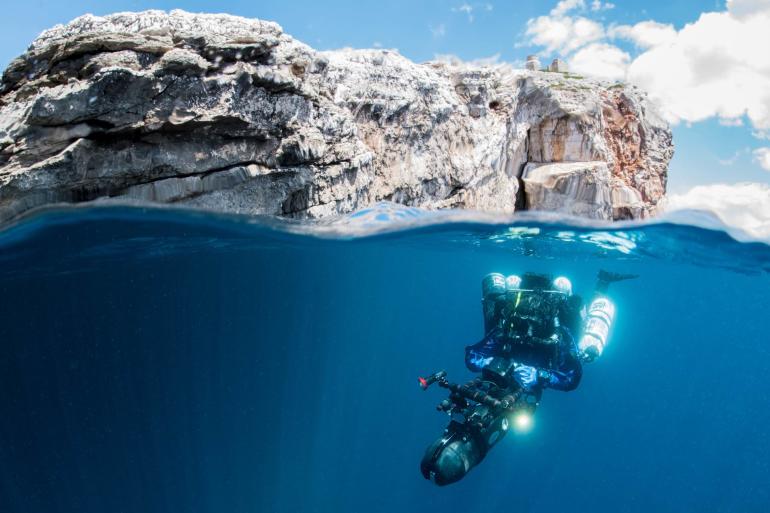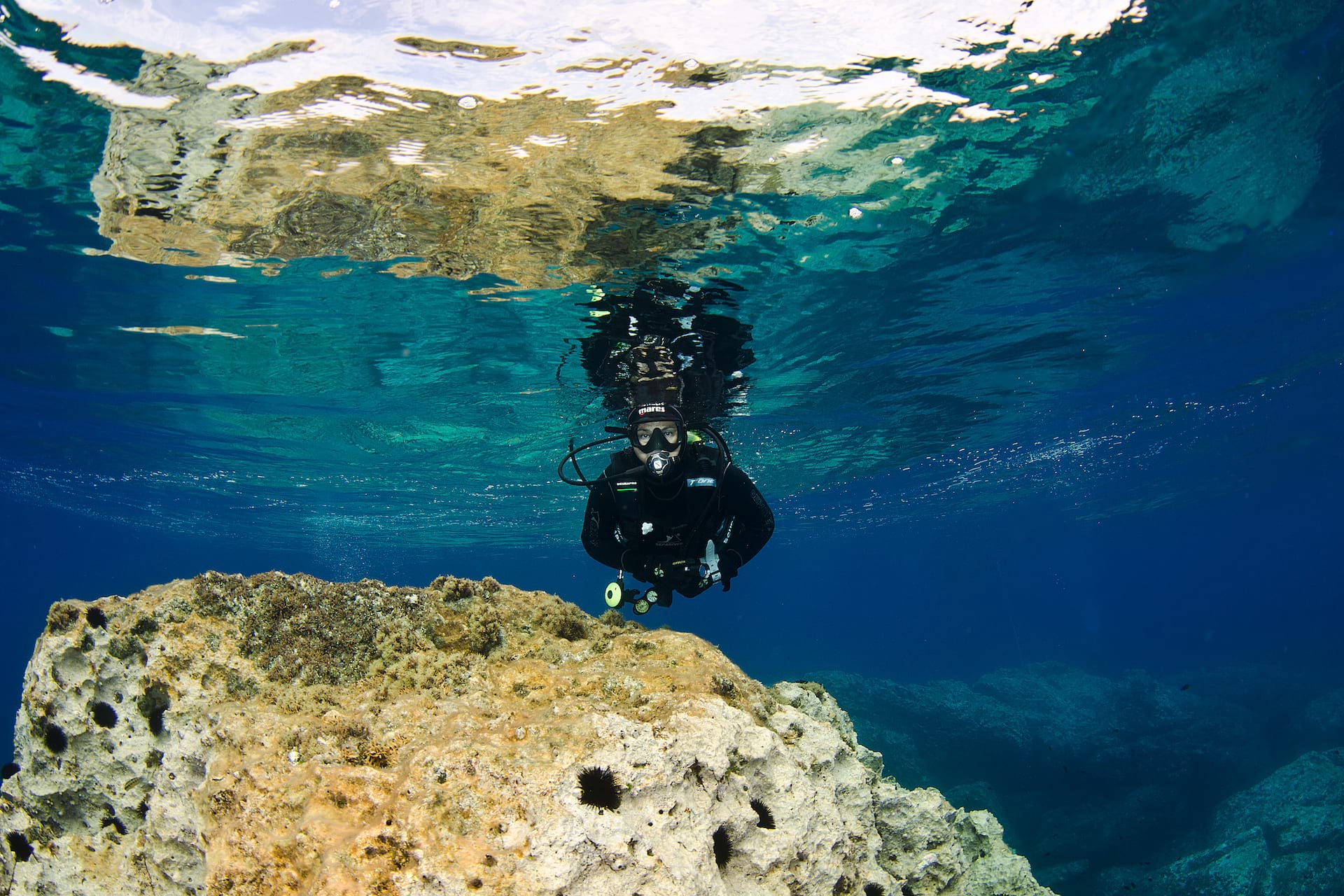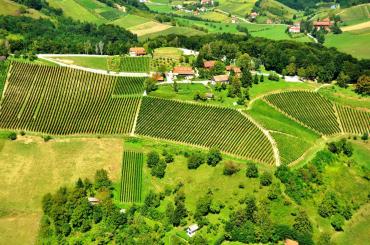With warm water and visibility ranging from 20 to 30m during the summer, SCUBA diving spots in the Croatian Adriatic are worth checking out.
The Adriatic coast boasts dozens of dive sites with reefs, caverns and WWII wrecks. Croatia offers dramatic landscapes and plenty of historical sites and cities to explore.
Dive Centers, Clubs and Liveaboards
Unorganized diving in Croatia is illegal, so if you want to explore the underwater world, you must visit a dive centre. No worries there, Croatia has many.
Even with a general permit, you need a special permit to dive in the Kornati Islands National Park, Mljet National Park and a few other locations
Whichever place you choose, there is a dive centre nearby. If you want to experience river diving, you should contact a dive club in your desired area and have it organized for you. Even with a general permit, you need a special permit to dive in the Kornati Islands National Park, Mljet National Park and a few other locations.
 Photo: Goran Butajla/ScubaLife
Photo: Goran Butajla/ScubaLifeBrbišćica near the Dugi Otok island is a great place to safely try how it feels to SCUBA dive in a cave
Liveaboards are one of the most remarkable experiences when it comes to SCUBA diving, and now they exist in Croatia too. Imagine spending a week on a diving boat, exploring the underwater world and the coast, accompanied by like-minded people.
Where to Dive
Croatia's underwater treasures include wrecks, coral reefs, caves and endless schools of fish. Speaking of wrecks, Croatia has its fair share. You can see wrecks from Ancient times, World Wars, and the Croatian War of Independence; warships, merchant ships and even plane wrecks, among which is the mighty WW2 'Flying Fortress' near Vis and Junkers Ju-87 Stuka south of the island of Žirje!
 Photo: Goran Butajla/ScubaLife
Photo: Goran Butajla/ScubaLifeThe remains of Junkers Ju-87 Stuka aeroplane near Žirje island is one of many spectacular WWII wrecks in Adriatic
In Croatia, you can enjoy biodiversity at every dive site. You can see dolphins, seahorses, rare sponges, enormous schools of fish, turtles and many more. However, what is crucial is that you should never touch, disturb or take any organism living in the sea!
The sea is shallowest around the Istrian coast but becomes progressively deeper the further south you go
The best diving in Croatia tends to be in comparatively deep water; beginner divers must choose carefully! The sea is shallowest around the Istrian coast (at around 50m) but becomes progressively deeper the further south you go. The deepest point is around Jabuka Island (70km northwest of Vis Island), where the water is as deep as 1300m.
 Photo: Aquapix
Photo: AquapixShipwreck of the Baron Gautsch lies near the town of Rovinj. It should be reserved for more experienced divers
Choosing a destination is the most challenging decision while planning your trip. You can always opt for popular sites welcoming thousands of divers yearly or choose a not-so-popular place. Popular spots are popular for a reason, but don't let that discourage you from selecting a site not mentioned in every SCUBA diving guidebook.
Baron Gautsch, Rovinj
Often described as one of the most beautiful wrecks in the Adriatic, Baron Gautsch's ship lies at the bottom off the coast of the island of Rovinj. It should be reserved for more experienced divers, but if you fit the bill, this is one diving spot to be witnessed.
Near Cavtat lie the remains of an ancient Roman-time shipwreck carrying about 600 amphorae.
Resting on the sea floor since its demise in 1914, this 89-meter passenger shipwreck is adorned in multi-coloured algae and corals, and its depth of 39 meters means that many schools of fish now call it home.
 Photo: Goran Butajla/ScubaLife
Photo: Goran Butajla/ScubaLifeAt a depth of only 25 meters, some 600 amphorae from Roman-times shipwreck are scattered on the bottom near the town of Cavtat
For excellent marine diversity and plenty of adventure, this is definitely one of the best SCUBA dive sites in Croatia.
Amphorae of Cavtat
Amphorae have always excited the imagination of divers. Near the tiny island of Supetar, near Cavtat, lie the remains of an ancient Roman-time shipwreck carrying about 600 amphorae. After it was discovered in 1999, a lattice structure was placed on the entire site, successfully preventing future devastation. The depth of their location varies between 25 and 30 meters. The bottom is flat and a bit muddy, so the transparency of the water can vary. Currents are weak, so with an anchor rope, this location can be exciting and accessible even to many novice divers.
 Photo: Goran Butajla/ScubaLife
Photo: Goran Butajla/ScubaLifeTo see the bushes of gorgonians, teeming with marine species, head out to Vodnjak Islet
Many conger eels, groupers, moray eels and octopuses have found their hiding place in the amphorae, making this location even more enjoyable.
This site is a cultural asset of the Republic of Croatia, and diving is only allowed through authorized diving centres.
Gorgonias of Vodnjak Islet
On the very end of the west side of Pakleni Otoci islands, there is a charming islet of Vodnjak. There are some interesting diving spots overgrown with bushes of gorgonians, teeming with marine species, but the best one is an underwater crag called Kampanel, which means "bell tower". The tower rises from 40 to 10 meters below the surface and is covered in bright red gorgonians.
The diving season runs from May through November, but feel free to dive in September and October - the water is still warm
Another exciting part of the site is the 5meters long tunnel at a depth of 35 meters. The site is reached by boat, and as it is an open-water dive, divers are bound to feel an adrenalin rush as they dive down to the seabed along the anchoring line. It is definitely an excellent site.
 Photo: Damir Zurub/ScubaLife
Photo: Damir Zurub/ScubaLifeCroatian Adriatic is a perfect destination for SCUBA divers with experience, but there are also many great sites for complete beginners
Water, Weather & Waves
The diving season runs from May through November. Feel free to dive in September and October; the water is still warm, and the crowds are considerably smaller. The rough, cold waters in the winter months make diving unpleasant.
Summer water temperatures range from 22°C to 25°C at the surface but drop to 19°C below 12m. Most people are more comfortable in a wetsuit, even in summer. Winter water is a chilly 11°C at the surface.
Most people are more comfortable SCUBA diving in a wetsuit, even in summer
Although there is a little surge and minimal tides in Croatian waters, wave height runs from 0.5m to 1.5m but can be as high as 5m. Currents are weak in most places but watch out for the channels and passages between islands.
Croatian part of the Adriatic is the closest warm water diving destination to Eastern Europe, and diving is possible all year. For the best experience, ask RealCroatias trip designers to provide the tailor-made experience you always wanted.





